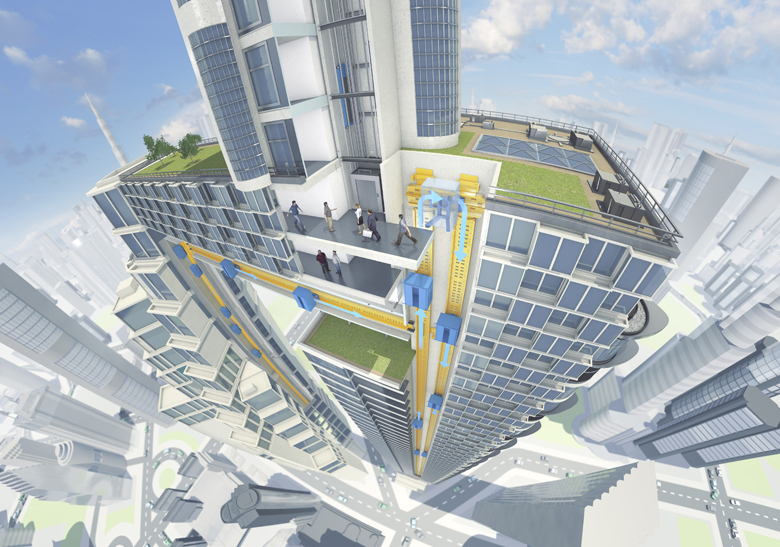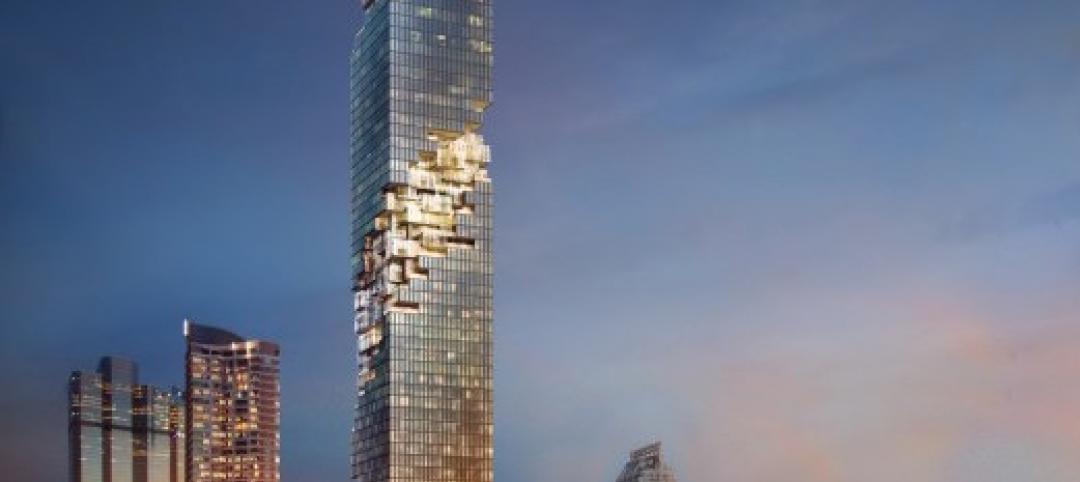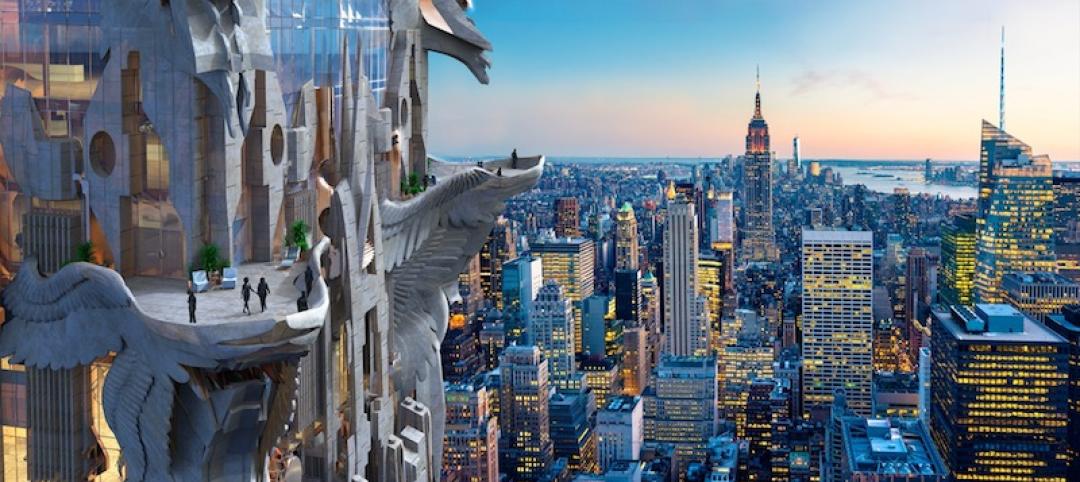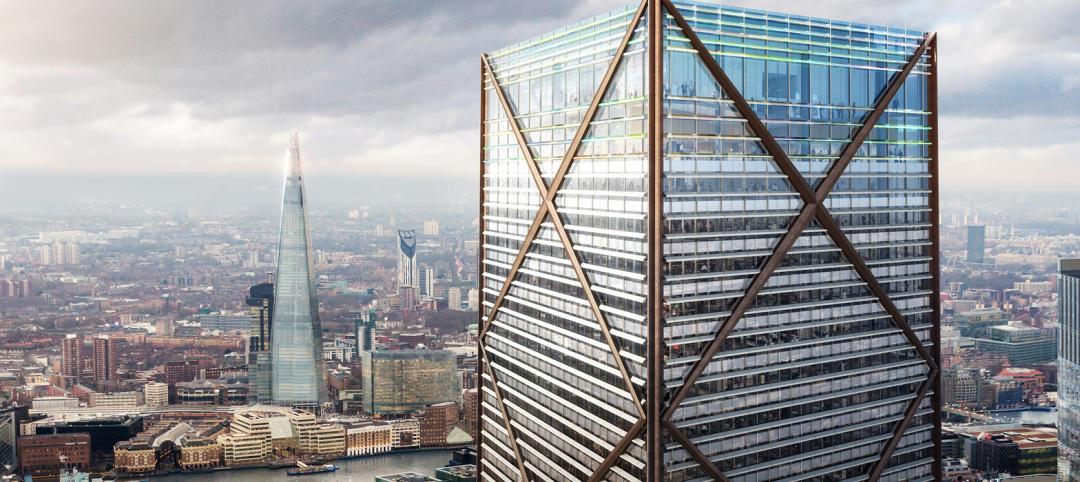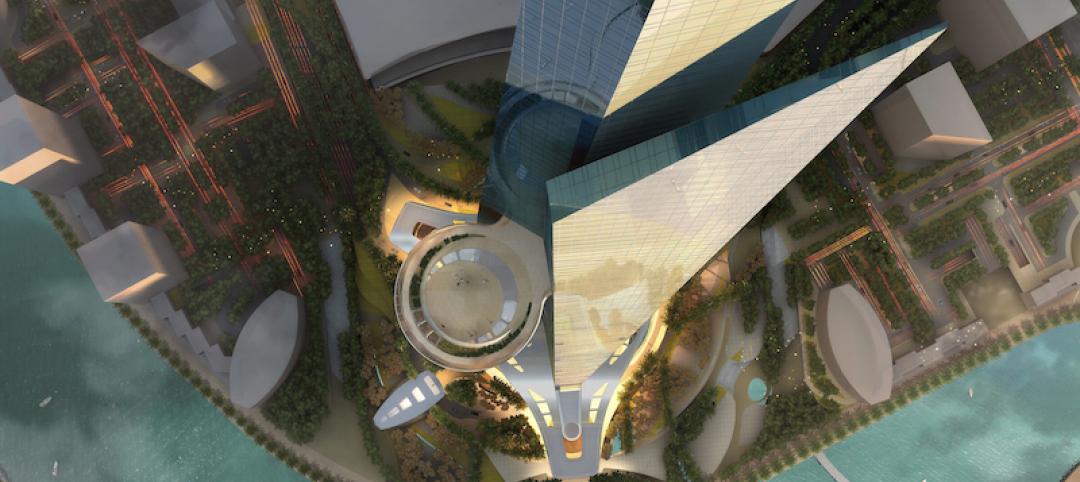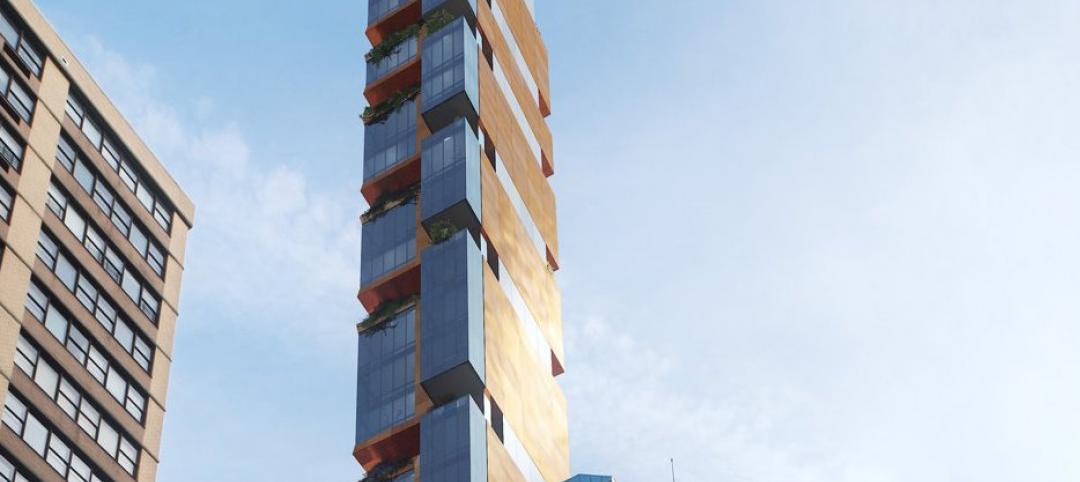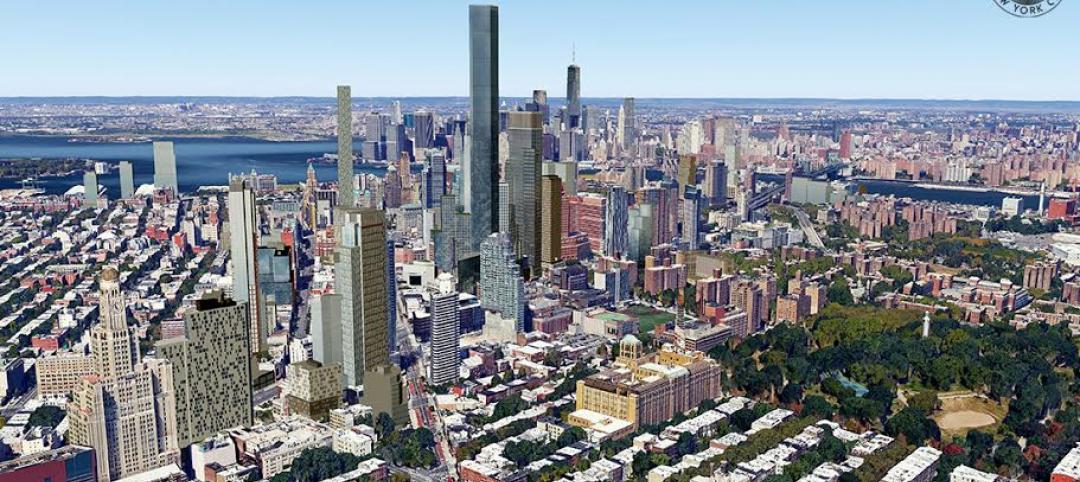A 2013 analysis of two-dimensional elevator traffic systems likens the present use of one cabin per elevator shaft to using an entire railway line between two sites with a single train—an avoidable inefficiency.
ThyssenKrupp's latest offering, named MULTI, will allow several cabins in the same shaft to move vertically and horizontally, which the company says is “a new and efficient transport solution for mid- and high-rise buildings.”
The mechanism is made possible by applying the linear motor technology of the magnetic levitation train Transrapid to the elevator industry.
In a manner similar to a metro system operation, the elevator design can incorporate various self-propelled elevator cabins per shaft running in a loop, increasing the shaft transport capacity by up to 50%, making it possible to reduce the elevator footprint in buildings by as much as 50%.
The elevator requires no cables, and uses a multi-level brake system and inductive power transfers between shaft and cabin. This allows the elevator to occupy smaller shafts than conventional elevators, which can increase a building's usable area by up to 25%. The overall increase in efficiency also translates into a lower requirement for escalators and additional elevator shafts, resulting in significant construction cost savings as well as a multiplication of rent revenues from increased usable space.
Although the ideal building height for MULTI installations starts at 300 meters, this system is not constrained by a building's height.
“Building design will no longer be limited by the height or vertical alignment of elevator shafts, opening possibilities to architects and building developers they have never imagined possible,” the company said in a release.
MULTI is based on the concept of ThyssenKrupp TWIN's control system and safety features, but includes new features such as new and lightweight materials for cabins and doors, resulting in a 50% weight reduction as compared to standard elevators, as well as a new linear drive—using one motor for horizontal and vertical movements.
Operating on the basic premise of a circular system, such as a paternoster, MULTI consists of various cabins running in a loop at a targeted speed of 16 m/s, enabling passengers to have near-constant access to an elevator cabin every 15 to 30 seconds, with a transfer stop every 50 meters.
Related Stories
High-rise Construction | Jan 4, 2016
Top high-rise innovations of 2015
A crowdfunded skyscraper in Colombia and Jerusalem’s wild, pyramid-shaped tower are among the landmark projects featured in the Council on Tall Buildings and Urban Habitat’s annual yearend review.
High-rise Construction | Jan 4, 2016
Top tall building predictions for 2016
Jetpack-based firefighting, pixelated towers, and high-rise rentals are among the innovations and themes coming to the tall buildings market in 2016, according to the Council on Tall Buildings and Urban Habitat.
High-rise Construction | Jan 4, 2016
Amid high-rise office building boom, Boston grapples with corporate signage rules
City has few skyscrapers adorned with lit company names, logos.
High-rise Construction | Dec 18, 2015
Architect Mark Foster Gage proposes wildly ornate Gothic skyscraper for NYC
The 102-story tower, 41 West 57th Street, will have glass walls, balconies, and a carved stone façade.
High-rise Construction | Dec 8, 2015
Architect Eric Parry unveils design for London’s tallest building
At more than 1,000 feet, 1 Undershaft will rival The Shard in height.
High-rise Construction | Dec 8, 2015
Saudi Arabia secures funding for world’s first kilometer-tall skyscraper: Jeddah Tower
The tower will overtake the Burj Khalifa in terms of height, but how long will it remain king?
High-rise Construction | Nov 28, 2015
Anorexic skyscrapers keep popping up in Manhattan
One project slated to begin construction next spring is designed to be only 47 feet wide.
High-rise Construction | Nov 23, 2015
London approves designs for a 62-story tower
Scheduled to start construction next year and open in 2019, the structure will be London’s second tallest, after the 95-story Shard.
High-rise Construction | Nov 17, 2015
CTBUH awards '2015 Best Tall Building Worldwide' to Bosco Verticale
Designed by Italian architect Stefano Boeri, the building design was applauded for its “extraordinary implementation of vegetation at such scale and height."
High-rise Construction | Nov 12, 2015
SHoP unveils Brooklyn supertall tower design
When completed, the 90-story tower will be the tallest building in the outer boroughs of New York City.


